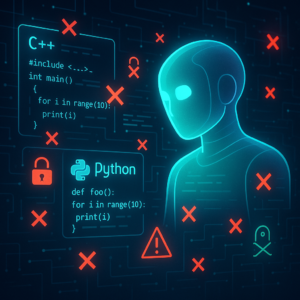Machine Generated Product Advertisements: Benchmarking LLMs Against Human Performance

Revolutionizing E-Commerce: Can AI Write Better Product Descriptions Than Humans?
In the bustling marketplace of online commerce, crafting the perfect product description can be the golden ticket to capturing consumer interest and boosting sales. But who should hold the pen—or, perhaps, the algorithm—in this dance of words? Advances in artificial intelligence promise to revolutionize textual product promotion. According to a recent study titled “Machine Generated Product Advertisements: Benchmarking LLMs Against Human Performance” by Sanjukta Ghosh, the spotlight turns to whether Large Language Models (LLMs) can genuinely match or even outperform human creativity and finesse in writing product advertisements.
The Dawn of AI-Driven Content
AI writing tools are rapidly reshaping industries by saving time and generating creative content. In e-commerce, the competition for catchy, persuadable product descriptions is fierce. Human writers bring intuition, emotional intelligence, and a flair for creativity. But AI offers scalability, consistency, and an ability to churn out content at the speed of light. Could they bridge creativity’s artistic nuances with algorithmic precision to create compelling product copy?
Setting the Stage: What Was Studied?
The study by Sanjukta Ghosh pits four AI models—Gemma 2B, LLAMA, GPT-2, and the celebrated ChatGPT-4—against human-generated product descriptions. The twist? Each model was evaluated with and without sample descriptions to guide their writing. The essence of the research lies in scrutinizing these descriptions through multifaceted lenses such as:
- Sentiment: Emotional tone and positivity of the description.
- Readability: The ease with which potential buyers can understand the text.
- Persuasiveness: The ability to convince the buyer.
- SEO: Optimization for search engine visibility.
- Clarity and Focus: Legibility and adherence to the product’s core attributes.
- Emotional Appeal: Creating a connection with the reader.
- Call-to-Action Effectiveness: Encouraging potential buyers to take action.
The AI Writing Challenge: Who Wins?
ChatGPT-4: The Stellar Performer
Of all the models, ChatGPT-4 emerged as the most adept at mimicking human-written quality. Its outputs were not just intelligible but engaging and appropriately aligned with the product’s values. ChatGPT-4 champed several evaluation criteria, showing promise in shaping the future of e-commerce content with increased sophistication.
Falling Short: Other AI Models
In contrast, models like Gemma 2B, LLAMA, and GPT-2 faced significant performance issues. The descriptions often slipped into incoherence—losing logical structure, clarity, and relevance to the product. The resulting mishmash of information often left consumers puzzled rather than informed or convinced.
Breaking Down the Metrics: What Makes Content Win Hearts?
The seven evaluation metrics serve as the foundation for what transforms mundane text into magnetic narratives. Here’s how:
Sentiment
Positive sentiment aligns products with consumer values and aspirations. ChatGPT-4 was adept at tweaking tone subtly and tastefully, perhaps generating warmth or excitement for the product.
Readability
AI’s role is to democratize understanding. Texts drowning in jargon or sophisticated language alienate potential customers. With simple phrasing, ChatGPT-4 reached a broader audience without diluting the core message.
Persuasiveness
The art of persuasion delicately rests on features, benefits, and sugar-coated offers. Crafting sentences which naturally glide into the consumer psyche without feeling pushy is what ChatGPT-4 did best.
SEO
Search engines are the map guiding consumers to your aisle. ChatGPT-4 seemed to understand the nuances of SEO, naturally embedding keywords within well-structured, valuable content.
Clarity and Focus
Clear, focused descriptions prevent information overload—ChatGPT-4 honed in on product facts while sidestepping tangential drift.
Emotional Appeal
Beyond logic, emotions buy experiences. Good descriptions paint a vivid picture. ChatGPT-4 managed to engage users by interweaving emotional triggers alongside factual content.
Call-to-Action Effectiveness
Every good advertisement has a purpose: propel the consumer to take that next step. ChatGPT-4 raised the bar by integrating seamless invitations to purchase without breaking narrative flow.
The Implications for Marketplaces and Marketers
For businesses yearning to succeed in digital space, leveraging AI-driven tools like ChatGPT-4 could maximize efficiency and style. However, relying solely on AI might not be wise just yet. Balancing human intuition with automated prowess may enhance brand messaging consistency while preserving the creative spark. Companies can look to AI for drafting while assigning human editors to tweak and tailor the narrative finesse.
Practical Strategies:
-
Hybrid Writing Teams: Blend AI capabilities with human creativity, using AI for initial drafts and humans for refining personal touches.
-
A/B Testing: Utilize different combinations of AI and human-written descriptions to identify what resonates best with the target audience.
-
Continuous Training: Monitoring AI progress through model updates ensures content stays sharp and reflective of current consumer trends.
-
Focus on SEO: Invest time in mastering how AI understands SEO to optimize descriptions for search engines effectively.
Key Takeaways
The study by Sanjukta Ghosh illuminates fascinating perspectives on AI’s evolving role in content creation:
- Human superiority in creativity still has an edge, yet AI is bridging gaps, particularly with ChatGPT-4’s prowess in writing near-human quality product descriptions.
- AI models vary significantly in their capabilities. While some struggle, others like ChatGPT-4, show potential in revolutionizing how we approach e-commerce marketing.
- A hybrid approach might currently be optimal, merging the reliability and scale of AI with human creativity to craft narratives that captivate potential buyers.
- Keeping up with advancements is crucial, as AI technology grows more sophisticated, offering dynamic ways to refine e-commerce strategies.
AI isn’t the enemy of creativity; with the right approach, it’s an ally helping businesses resonate more deeply with tech-savvy consumers craving authentic engagement. Keep an eye on this space—it’s only the beginning of what AI and content can achieve together in the bustling world of e-commerce.




